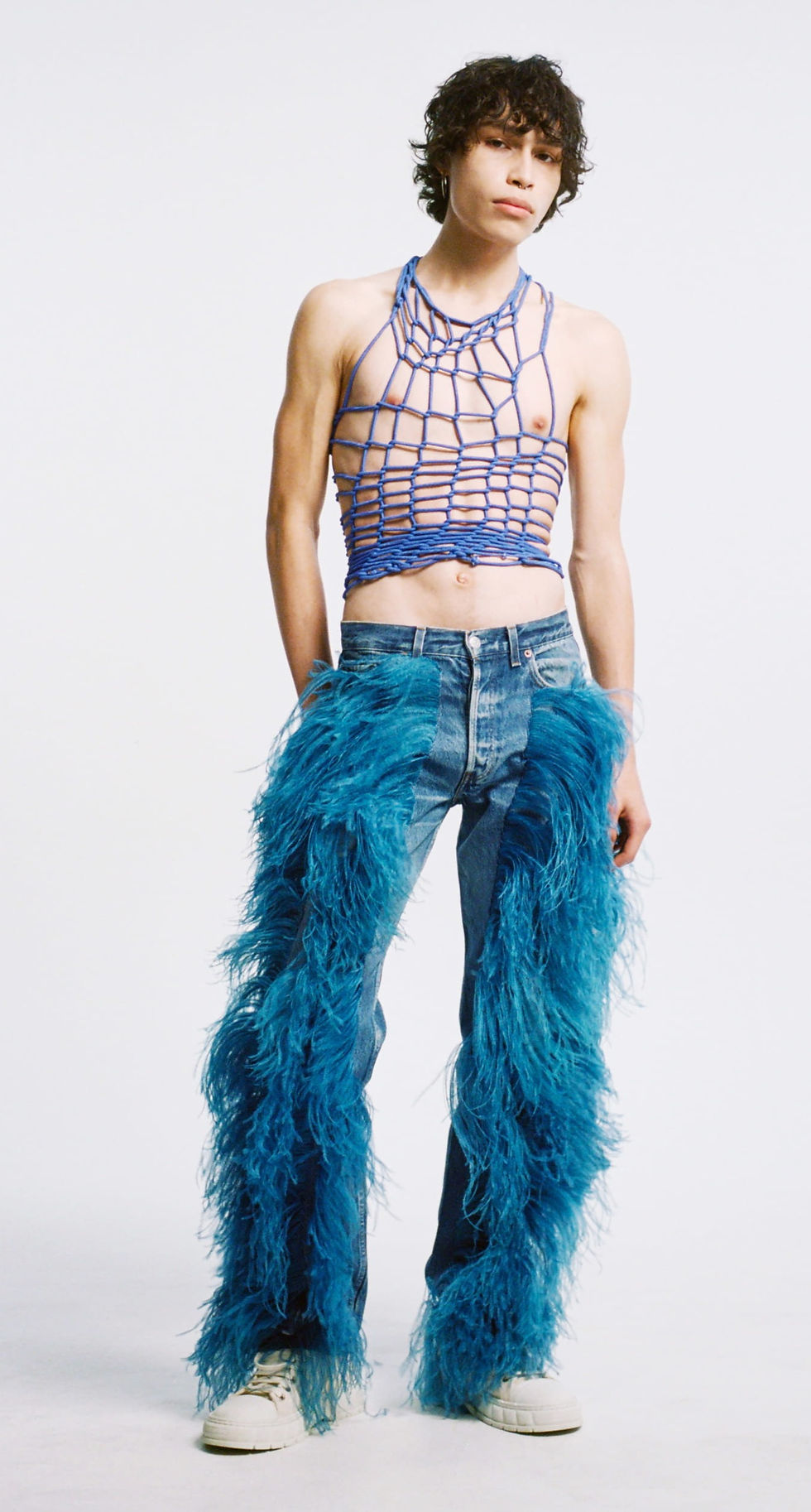MENSWEAR READY-TO-WEAR SPRING-SUMMER 2023
Swati Bhat

Courtesy: PFW Official
Download the schedule from below given link:
PFW Sphere Showroom Brands

Courtesy: PFW Official
ARTURO OBEGERO

Arturo Obegero studied pattern making for a few years before joining Central Saint Martins, from which he graduated in 2018. After a year’s experience in the workshops of the House of Lanvin, he chose to launch his own brand. His ready-to-wear is inspired by dance, surrealist and neo-noir movements. His designs make up a romantic, sensual and austere wardrobe for both men and women.
EGONlab.

EGONlab. is deeply inspired by artistic movements and offers a reinterpretation of these revolutions. Fusing fashion, music, motion design and art, EGONlab. is a clever mix, both a unique brand and a movement in itself offering a totally immersive experience. EGONlab. juxtaposes masculine and feminine, modernity and historical know-how, romance and rebellion, sustainability and creativity. Their urban-punk DNA aims to dress all body types, all genders and all ages. EGONlab. was awarded the Andam- Pierre Bergé 2021 prize. EGONlab. is registered in the Official Calendar of the PFW® since January 2021.
LGN LOUIS GABRIEL NOUCHI

LGN Louis-Gabriel Nouchi, founded in 2017, has been registered in the PFW® Official Calendar since January 2018. A graduate of the Cambre School of Visual Arts, Louis-Gabriel Nouchi began his career at Vogue Paris as well as at Raf Simons. In 2014, he was nominated at the Festival de mode, de photographie et d’accessoires de mode - Hyères and won the Prix Camper and the Prix du Palais de Tokyo. The designer, inspired by both grunge counter-culture and traditional know-how, creates clothes that can be worn regardless of gender. Constantly seeking to improve the materials he uses, and partnering with European luxury factories and large textile groups, LGN offers a new relationship with clothing and the way fashion is conceived. Each piece has a «controlled defect», a magnified wear that allows each one to tell its own story. Product quality, production transparency and honesty are at the heart of the brand.
LUKHANYO MDINGI

Hailing from South Africa, the eponymous label Lukhanyo Mdingi was established in 2015. Since its inception, the label has been placed under the auspices of the Ethical Fashion Initiative’s accelerator program as well as the prestigious LVMH Karl Lagerfeld Prize 2021. The intention behind the label is to ensure a conscious approach in product development while looking into the human spirit as the provenance to create design that is honest, stable and strong. Its men’s collections have been spotted by Vogue Italia and I.D., among others. Lukhanyo will present its collection for the first time in the official presentation calendar in January. Lukhanyo Mdingi is a finalist for the ANDAM 2022 Grand Prize.
JEANNE FRIOT

Jeanne Friot is a Paris-based, gender-neutral brand founded in 2020. The brand offers pieces produced in limited series from recycled or upcycled materials. A graduate of the Duperré school and then the French Fashion Institute in 2018, Jeanne Friot has worked in several houses including Balenciaga. Passionate about creating images, she has also collaborated as a stylist with editorials such as Vogue Italia and Les Inrocks. The young designer offers an ethical and inclusive fashion made in France since January 2022.









